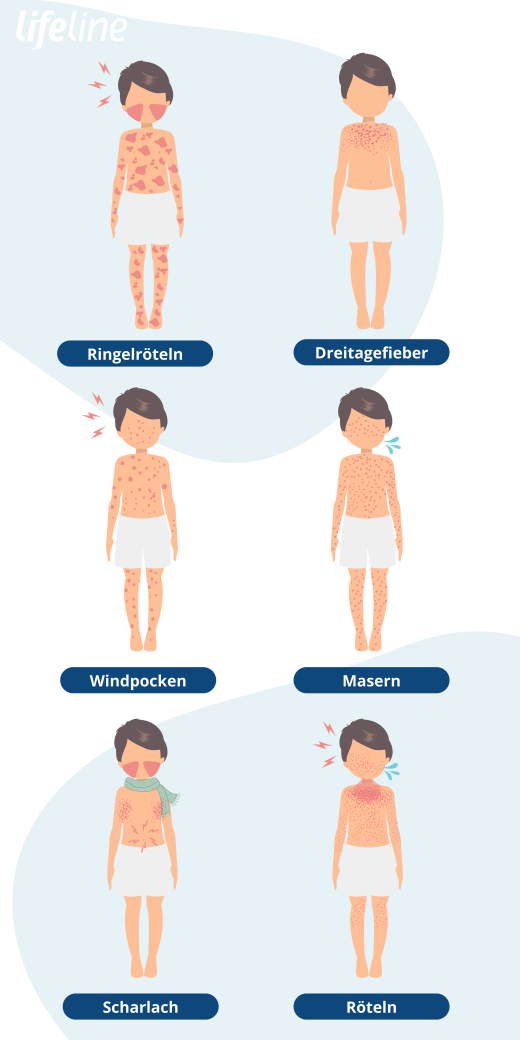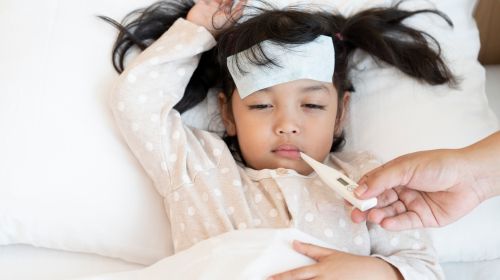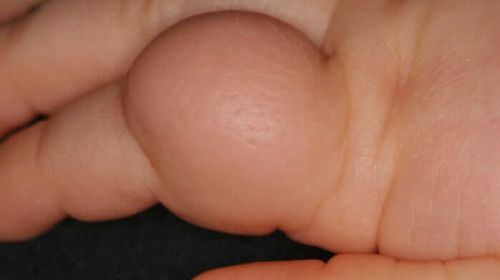Rubella (Erythema infectiosum) is caused by viruses and is one of the typical childhood diseases, although adults can also get it. How does the infection occur, what are the typical symptoms and how dangerous is the infection during pregnancy?
- © Getty Images/JulPo
Quick overview: Rubella
What are ringworms? Rubella is a virally transmitted infectious disease that primarily occurs in children. Adults can also become ill. Lifelong immunity exists after an infection with rubella.
Cause: The disease is triggered by the parvovirus B19, which is usually transmitted via droplet infection. The viruses can also enter the organism via smear infection via contaminated objects.
Symptoms: In addition to general symptoms such as fever, there is a characteristic large-spotted rash that appears butterfly-shaped on the cheeks. After some time, the rash also becomes visible on the upper body, extremities and buttocks. As it progresses, it can change in a spiral shape and resemble garlands.
Therapy: As a rule, no targeted treatment is required. Appropriate medication can be taken against fever and pain.
Prevent: A vaccination is currently not available.
At a glance:
What are ringworms?
Rubella is also known as erythema infectiosum and is not related to rubella. They are not caused by the rubella virus, but by the parvovirus B19, which only occurs in humans. The most common infections occur from late winter to early summer, especially in kindergartens and schools. Children up to school age are most commonly affected by rubella, but older children and adults can also become ill. After infection, there is lifelong immune protection against rubella.
Cause, infection and incubation period of rubella
Parvoviruses are the cause of rubella. These are extremely resistant, even in the air. The most common route of infection is droplet infection when coughing and sneezing. Another source of infection is poor hand hygiene. Pregnant women can pass the infection to their unborn child.
The time from infection to the appearance of the first symptoms (incubation period) is seven to 14 days. During this time there is already a risk of infection: those affected are highly infectious. As soon as the typical skin rash appears, rubella is no longer contagious.
Since the viruses are transmitted very easily and quickly between people, illness spreads particularly quickly in families and institutions such as kindergartens, children’s homes and schools.
Rubella: Symptoms of the infection
Rubella is characterized by a typical skin rash that appears butterfly-shaped on the face, cheeks and nose. The rash can include itching and feelings of tension. After one or two days, red spots appear on the arms, legs and bottom. When the rash clears up, it resembles ringlets or garlands. The rash will fade after seven to 10 days, but may recur during heat, stress, or physical exertion. After the rash clears, the skin may be dry and flaky for about four weeks.
-

© Lifeline
In some infected children and adults, the rash does not occur. The following symptoms are typical for rubella:
If the typical skin rash is not present, the symptoms of the illness are often confused with those of a flu-like infection.
Complications with rubella are rare. In a few cases, joint pain or joint inflammation occurs, which particularly affects girls and women. Rubella can be dangerous for people with certain blood diseases such as sickle cell anemia because of the risk of anemia.
Ringworm in pregnancy
Rubella can be dangerous during pregnancy as it can be transmitted from mother to unborn child. The risk is particularly high up to the 20th week of pregnancy.
The virus severely impairs the fetus’ blood production, which can result in a miscarriage or stillbirth. In addition, a blood deficiency (anemia) and water retention (hydrops fetalis) are possible in the child. The greatest risk of this occurs within the first twelve weeks of pregnancy (1st trimester). Educators who are pregnant and not immune to rubella (the blood should be tested for antibodies to be on the safe side) are usually banned from working as soon as rubella occurs in kindergarten or daycare. Asymptomatic courses are common during pregnancy (30 to 50 percent).
An infected unborn child needs blood transfusions to ensure that there are enough red blood cells (erythrocytes) in its bloodstream. The transmission takes place by injecting the erythrocytes into the umbilical cord or the abdominal cavity of the unborn child.
Rubella: diagnosis of the childhood disease
Rubella is diagnosed based on the typical skin rash. In unclear cases and during pregnancy, a blood test can also be carried out to detect antibodies against parvovirus B19.
After an infection with rubella, the virus multiplies in the precursors of red blood cells (erythrocytes) and thus inhibits their formation in the bone marrow. The number of erythrocytes in the blood is therefore reduced during the seven to eleven days of so-called erythropoiesis inhibition, which can also be detected using a blood test.
In those affected, the viruses can also be detected in tissue samples from reddened areas of skin and in saliva.
Unborn children often do not produce these antibodies in the womb. In order to determine whether the embryo or fetus is infected, the viruses can also be detected directly in the amniotic fluid using laboratory testing methods.
Therapy: How is rubella treated?
Rubella itself cannot be treated causally because there are no effective medications against the virus. However, because the disease is usually harmless and usually heals without complications, treatment is not necessary. Pain-relieving and fever-reducing medications such as paracetamol can be given to combat the fever, as well as medications to combat any itching that may be present.
If you have fever and pain, it makes sense to drink enough fluids and stay in bed. After the redness of the skin has subsided, skin care products can be used to combat dry skin.
Can rubella be prevented?
There is currently no vaccination against the rubella pathogen. People at increased risk due to existing anemia or a limited immune system, as well as pregnant women, should definitely avoid contact with those affected. Simple protective measures reduce the risk of further infection:
- Avoid contact with infected people.
- Wash your hands regularly and thoroughly with soap.
- Do not touch your face with unwashed hands.
- Pregnant women should have their antibodies against rubella checked, especially if they come into contact with children under the age of six.
- Pregnant women who are not immune should avoid kindergartens where rubella occurs.
If you come into contact with infected people, we recommend washing your hands thoroughly to reduce the risk of infection with rubella.


